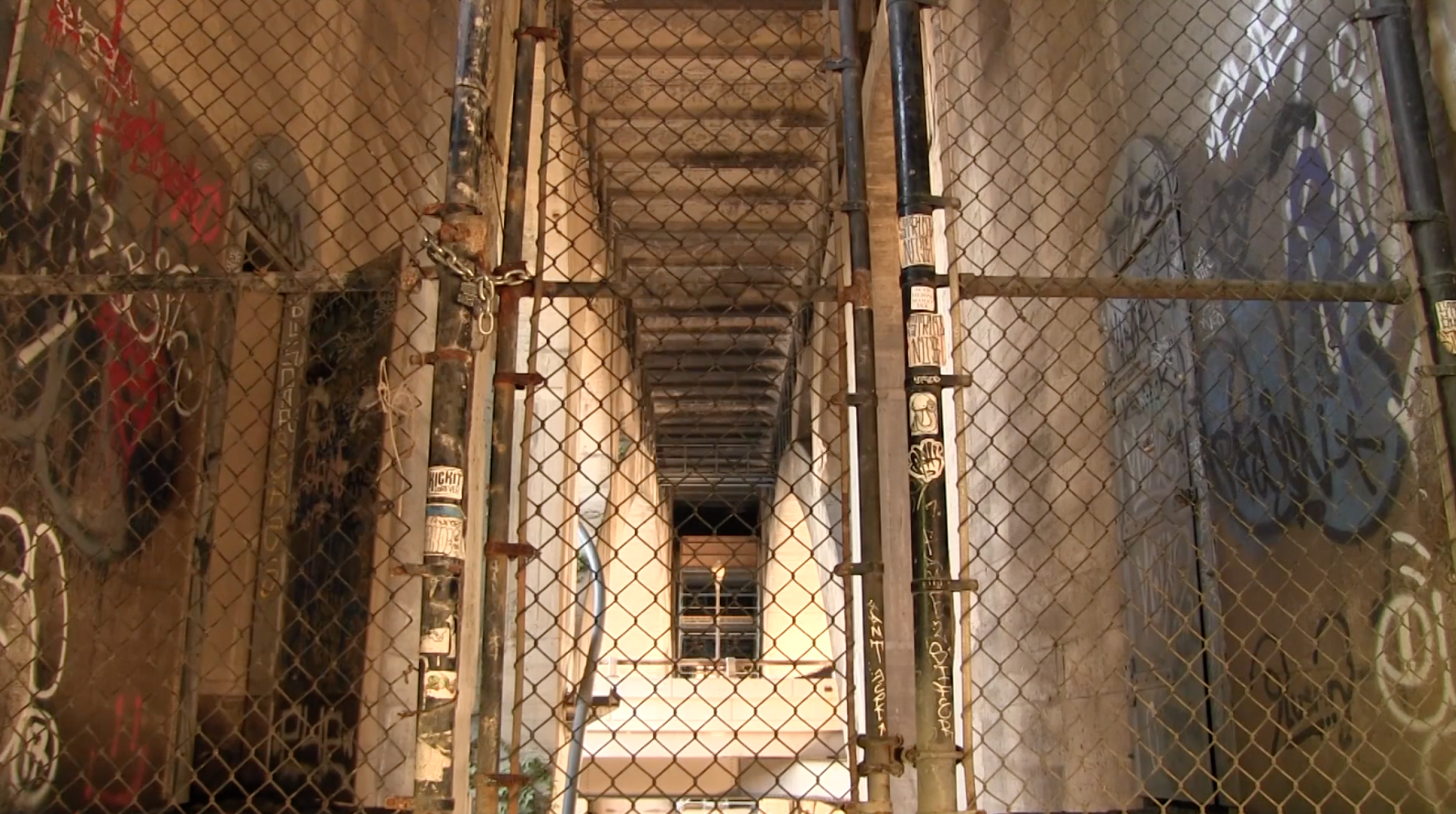media production lab
“The more opinions you have, the less you see.”
In the following projects, Joseph Potischman and I have sought to open ourselves up to the ability to represent as many perspectives as possible without pushing our own on the viewer. In Division we show the tension of competing perspectives, while in Canal No. 5 and Filthy Firth we portray that oftentimes the difference in opinion is simply the attitudes we bring into an experience.
Canon XA10 | Adobe Premiere Pro CC
Division
Division is a poetic exploration of the politics that divide us in America, or as in the short video, in Washington, DC. Through graphic matches of space and color, the film is meant to evoke the tension within our two party system. The most prevalent graphic match is a dividing vertical line through the center of the screen, seen with the empty alleyway, the Washington Monument, and a lamppost. By showing two people inhabiting the same space, but never in sync, we sought to emphasize the incongruity in lawmaking. The film plays with the roll call vote of Supreme Court Justice Sonia Sotomayor advancing on top of it. While there are many dissenters, the audio ends on a positive note. For this project, Joe and I went about our creative process differently than the films below. We began by discussing our vision and intent, and then broke up the project into filming and editing. Joe filmed what he thought best brought our word ("division") to life, and then I was able to puzzle piece the footage together, like Claude Levi-Strauss's idea of the bricoleur. I used his finite set of clips and tinkered with them until they told the story we wanted.
Canal no. 5
The Georgetown Canal is the kind of place where beauty is in the eye of the beholder. Canal No. 5 attempts to examine the beautiful and the serene along the Chesapeake and Ohio Towpath that runs along the canal, the Francis Scott Key Bridge that runs above it, and the Alexandria Aqueduct that overlooks it all. It juxtaposes the spray painted artwork with the natural greenery and the Potomac. The video utilizes a series of graphic matches of color and perspective, until it breaks its pattern to highlight contrast. While the viewer may have thought the video was contrasting the art with the plant life, it is revealed that what is truly out of place is the noise and bustle of the traffic. On the whole, viewers are meant to feel a sense of calm from the minimal movement and the ambient sound.
Filthy firth
Unlike Canal No. 5, Filthy Firth is meant to take an alternative perspective on the Georgetown Canal. This video focuses on the darker and dirtier nooks and crannies of the space. It juxtaposes the plant and animal life with the residue humans have left behind. The artwork is portrayed more in line with its alternate, and less appreciative, descriptor of graffiti. While the underlying traffic audio is the same as in the original video, it has been amplified substantially. Additional sounds were added, such as trash trucks and police sirens, to make the space feel less welcoming. The purpose of these videos together was to show that experiences can be shaped by the attitudes we hold going into them.
Additional Projects
“Cinema is a matter of what’s in the frame and what’s out.”
By taking the time to go back to the basics of sound and how to fill the frame, we were better able to execute our vision with intent rather than coincidence.
Soundscape
This audio project was an experiment to manipulate sound independent of imagery. To do so, we needed to step outside of the visual cues we as filmmakers so often rely on to tell a story. We used common household items to create meaning foreign to their actual use, such as an artificial plant to give the sense of running. The most difficult part of this was getting the timing for each action realistically placed. Time and again, during the editing process we felt our sounds were placed too far apart, but it was in the repetition of playback, and in sharing with friends and colleagues, that we determined that the deconstructed soundscape is the believable one.
camera explorations
Unlike the pieces above, this was a solo project. To better acquaint myself with the world's three dimensional space translated into to two dimensions by my camera, I went to Arlington National Cemetery. While experimenting with the x, y, and z-axes I was able to explore the grounds in a way that made me think differently about the hallowed place I was documenting. When thinking vertically, I was struck by how what we could see was only ornamentation for what was underneath. The x-axis drew my attention to the grass under my feet and the trees growing around me. It was a wonderful thing to see so much life amongst so much death. Ultimately, it was this last notion of death that was the most overwhelming of all. The z-axis made it impossible to forget the vastness of the cemetery and all the life that has been sacrificed.
I also experimented with focusing on the same object from a fixed position with varying compositions (croppings). Depending on the amount of zoom and cropping, I was able to focus on the individual, group, and landscape level, all of which have significantly different contexts and meanings.




